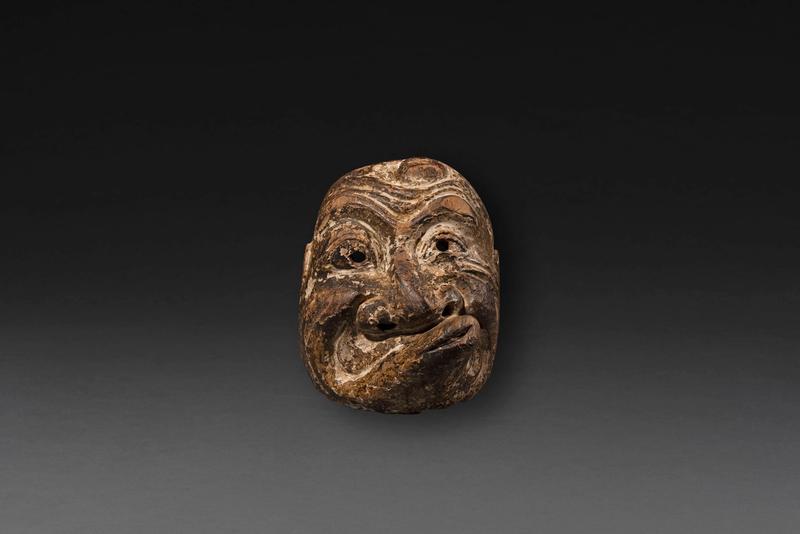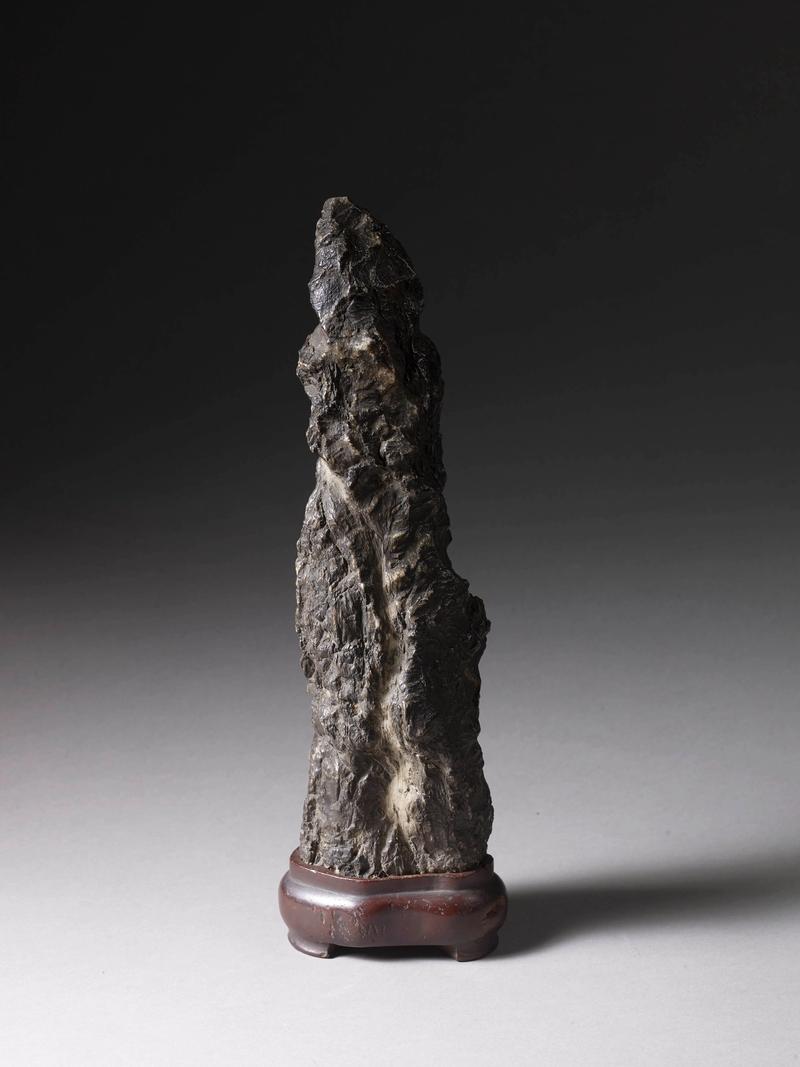A Lacquered Shield decorated with a European Coat of Arms.
The leather shield: Bengal, 17th century.
The lacquer: Japan, 17th century, Edo period (1603–1868).
Provenance: Private European Collection.
This rare leather shield of circular and convex form is decorated in gold hiramaki-e (low relief lacquer) and takamaki-e (high relief lacquer) with a European coat of arms. The coat of arms and monogram are flanked by two stylised palm leaves and the outer border is decorated with scrolling vines and foliage.
In the 17th century, leather shields of this type were produced in Bengal and taken to Japan by the VOC (Dutch East India Company) to be lacquered and decorated with maki-e (sprinkled with gold or silver powder). Written records suggest that in 1647, 35 Bengal shields were shipped from Batavia (today’s Jakarta) to Japan to be lacquered in black and gold which were then shipped back to Batavia in 1648.
These shields decorated in lacquer with individual family monograms and crests were made to order by members of the VOC or the Opperhoofden (the chief traders of the Dutch East India Company) from Deshima, an island in Nagasaki harbour which was as the only trading post between Japan and the outside world during the Edo period. Such shields commissioned by the VOC or the Opperhoofden became highly-prized centrepieces often used as decoration for official occasions and were rarely used as a form of defence.
Another shield similarly decorated with the crowned symmetrical monogram of Johan van Leenan (the VOC functionary in Hooghly from 1658 until 1674) within a band of foliage is in the collection of the Rijksmuseum, Amsterdam, Accession Number NG-NM-541. Two Japanese lacquered wedding plates, one bearing the crowned monogram of Joan van Hoorn and Susanna Angenita van Outhoorn and another of Willem van Outhoorn and Elisabeth van Heijningen, have similar compositional features to those on the present shield.
Literature: Hutt, J. ‘Asia in Europe: Lacquer for the West’ in Chapter 18, Jaffer, A. & Jackson, A. (ed.,) Encounters: The Meeting of Asia and Europe 1500-1800, V&A Publications, 2004.
Impey, O. & Jörg, C. Japanese Export Lacquer 1580-1850, Hotei Publishing, Amsterdam, 2005.
Zandvliet, K. (ed.) The Dutch Encounter with Asia 1600-1950, Rijksmuseum, Amsterdam, 2002.
Works of Art

A kakebotoke

A wood Kyōgen mask of Usobuki

A Chinese Suiseki (viewing stone)

A bronze flower vessel of mimikuchi

A pottery kake hanaire (hanging flower vessel)

A red lacquer Kamakura-bori dai-kogo (incense box)

A Lacquered Shield

A bronze brazier

A bronze hanging flower vessel

A Chinese bronze censer

A ceramic vase by Makuzu Kōzan II

A ceramic te-aburi (hand warmer)

A suiseki (viewing stone) of vertical form with a natural striation resembling a waterfall, with wood stand

A Tokoname storage jar

A bronze flower vessel

A wood Noh mask of Koomote

A black lacquer bon (tray)

A bronze brazier

An iron nyoi

A Tokoname storage jar









